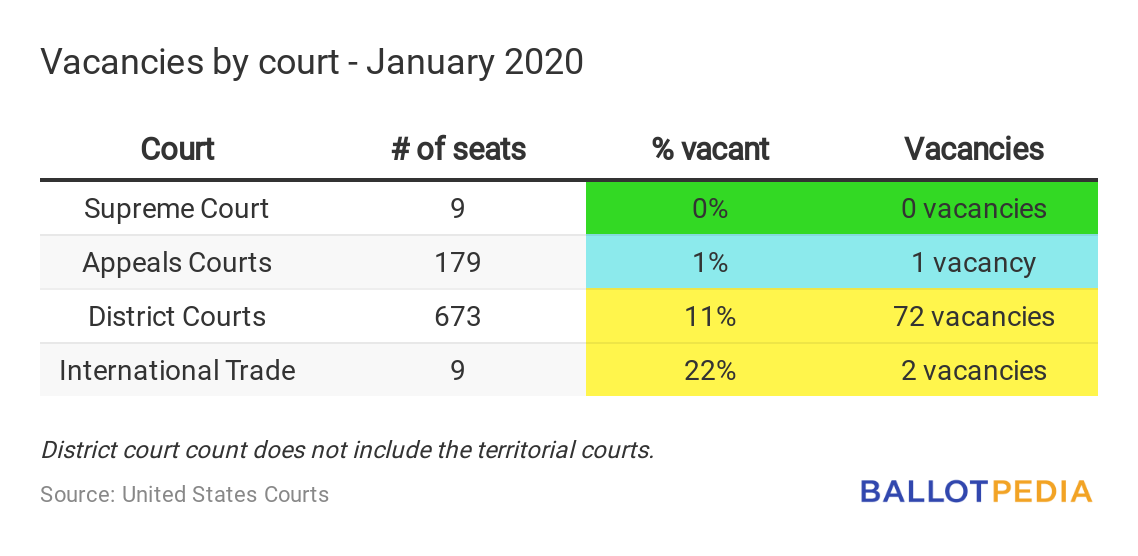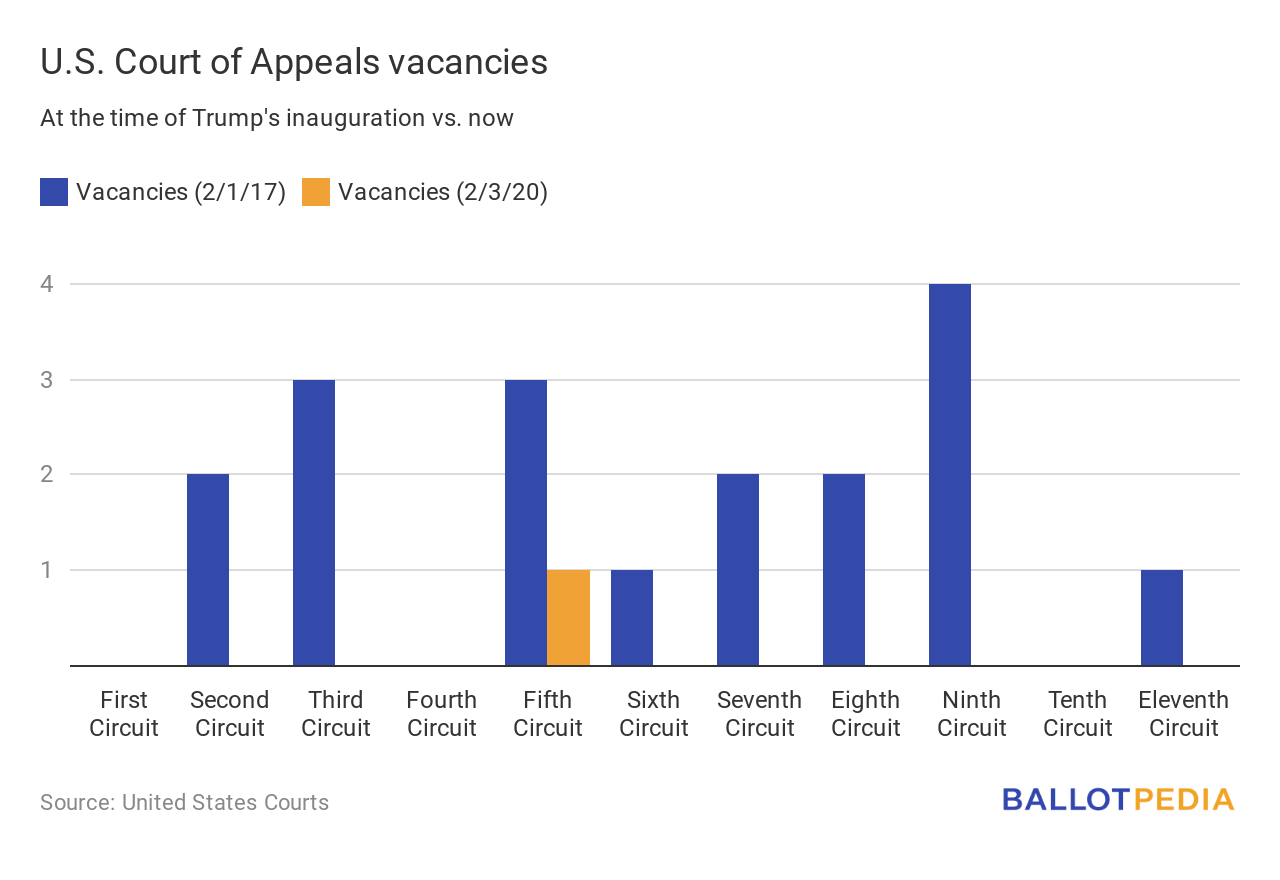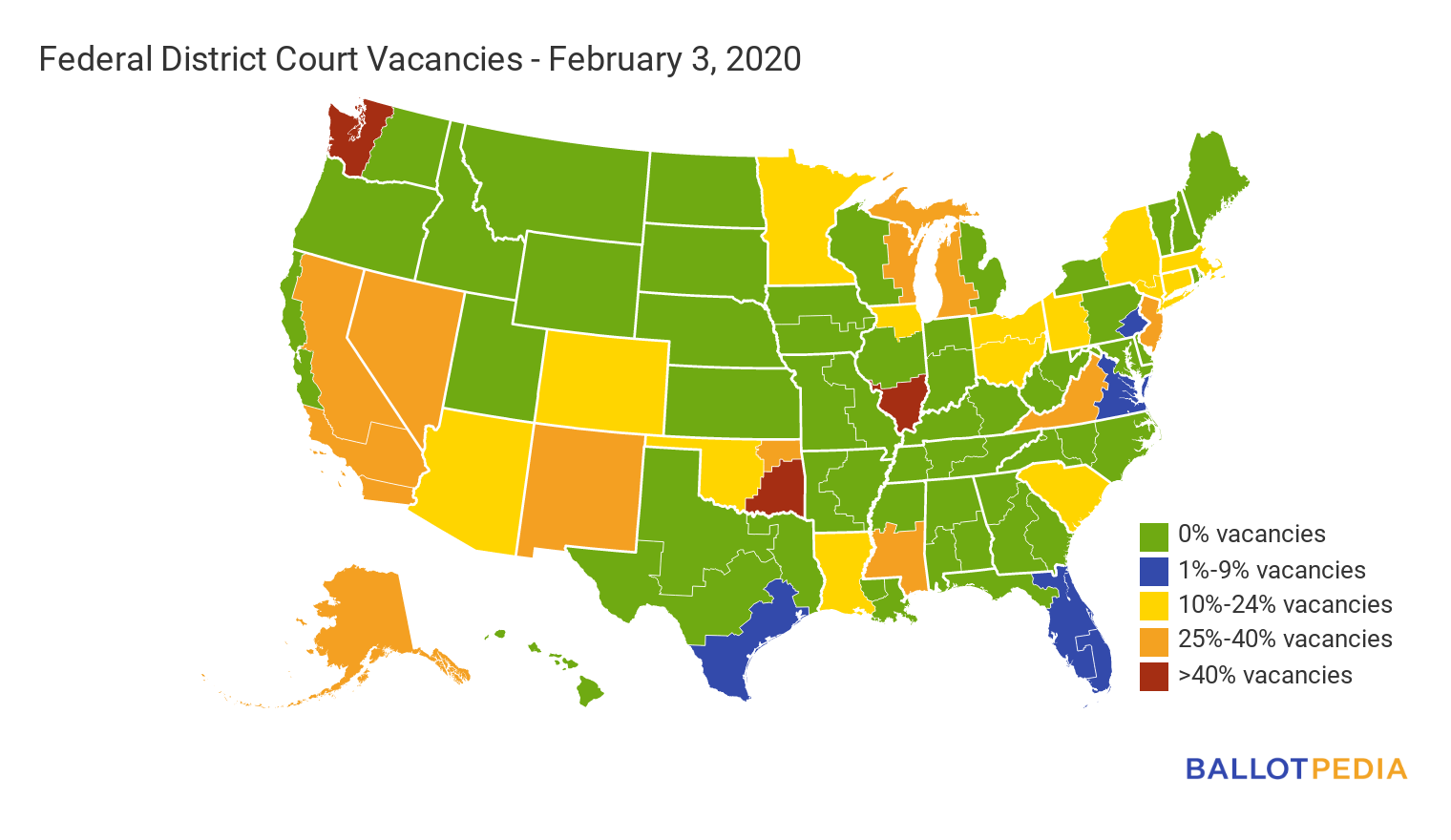Welcome to the February 10 edition of Bold Justice, Ballotpedia's newsletter about the Supreme Court of the United States (SCOTUS) and other judicial happenings around the U.S. Happy (early) Valentine's Day from Ballotpedia! Share the love and the information! Follow us on Twitter or subscribe to the Daily Brew.

Arguments
The Supreme Court justices are on winter recess until February 21. Click here to read more about SCOTUS' current term.
Today, we're highlighting an upcoming case that concerns the Constitution's separation of powers doctrine—Seila Law v. Consumer Financial Protection Bureau. The case is scheduled for argument on March 3 and came on a writ of certiorari to the U.S. Court of Appeals for the 9th Circuit.
The Consumer Financial Protection Bureau (CFPB) issued a civil investigative demand to the California-based firm Seila Law, which refused to comply with the demand. The CFPB petitioned the U.S. District Court for the Central District of California, asking the court to enforce compliance. Seila Law challenged the petition, arguing the CFPB violated the Constitution's separation of powers doctrine. The district court rejected Seila Law's argument and ordered it to comply. Seila Law appealed to the 9th Circuit, which affirmed the district court's order.
Seila Law petitioned the U.S. Supreme Court for review. The firm presented the following questions:
- Does the vesting of substantial executive authority in the CFPB violate the separation of powers?
- If the CFPB is found unconstitutional on the basis of the separation of powers, can 12 U.S.C. §5491(c)(3) be severed from the Dodd-Frank Wall Street Reform and Consumer Protection Act?
The Dodd-Frank Act created the CFPB in 2010. 12 U.S.C. §5491(c)(3) of the Act established one agency director, a presidential appointee subject to Senate confirmation. The director serves a five-year term, and can be removed only for cause—"inefficiency, neglect of duty, or malfeasance in office."
Opinions
Between 2007 and 2018, SCOTUS issued opinions in 850 cases, averaging between 70 and 90 cases per year. Below is a table listing the four opinions issued by the court so far this term:

Of the 74 opinions SCOTUS issued in its 2018-2019 term, it reversed 47, or 63.5%, of lower court rulings—a 7 percentage percent decline from its 2017-2018 term. Click here to read more about SCOTUS' 2018-2019 term.
Between 2007 and 2019, SCOTUS issued opinions in 924 cases. Of those, it reversed a lower court decision 650 times (70.3 percent) while affirming a lower court decision 266 times (28.8 percent).
Click here for more information on SCOTUS reversal rates. Ballotpedia will release this term's reversal rates in summer 2020!
Upcoming SCOTUS dates
Here are the court’s upcoming dates of interest in February:
- February 21: SCOTUS will conference. A conference is a private meeting of the justices.
- February 24:
- SCOTUS will release orders.
- SCOTUS will hear arguments in two cases.
- February 25: SCOTUS will hear arguments in one case.
- February 26: SCOTUS will hear arguments in one case.
- February 28: SCOTUS will conference.
The Federal Vacancy Count
The Federal Vacancy Count tracks vacancies, nominations, and confirmations to all United States Article III federal courts in a one-month period. This month's edition includes nominations, confirmations, and vacancies from January 3 to February 3.

Highlights
Vacancy count for February 3, 2020
A breakdown of the vacancies at each level can be found in the table below. For a more detailed look at the vacancies on the federal courts, click here.
*Though the United States territorial courts are named as district courts, they are not Article III courts. They are created in accordance with the power granted under Article IV of the U.S. Constitution. Click here for more information.
New vacancies
Three judges left active status, creating Article III vacancies. As Article III judicial positions, they must be filled by a nomination from the president. Nominations are subject to Senate confirmation.
The following chart tracks the number of vacancies on the United States Court of Appeals from the inauguration of President Donald Trump (R) to February 3.
 The following map displays federal district court vacancies as of February 3. The following map displays federal district court vacancies as of February 3.

New nominations
President Trump announced one new nomination since the December 2019 report.
- Drew Tipton, to the U.S. District Court for the Southern District of Texas.
The president has announced 239 Article III judicial nominations since taking office January 20, 2017. The president named 69 judicial nominees in 2017, 92 in 2018, and 77 in 2019. For more information on the president’s judicial nominees, click here.
New confirmations
Between January 3 and February 3, 2020, the Senate did not confirm any of the president’s nominees to Article III courts.
Since January 2017, the Senate has confirmed 187 of President Trump’s judicial nominees—133 district court judges, 50 appeals court judges, two Court of International Trade judges, and two Supreme Court justices.
Need a daily fix of judicial nomination, confirmation, and vacancy information? Click here for continuing updates on the status of all federal judicial nominees.
Or, if you prefer, we also maintain a list of individuals President Trump has nominated.

We'll be back February 24 with a new edition of Bold Justice. |